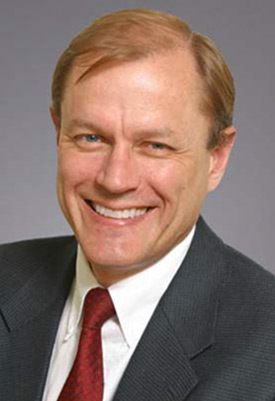FERC last week ruled in favor of SPP in its dispute with Associated Electric Cooperative, Inc. (AECI) over emergency energy transactions during the February 2021 winter storm, finding that the RTO properly compensated the cooperative in accordance with its tariff (EL22-54).
In its Aug. 22 order, the commission also granted SPP’s request that FERC assert exclusive or primary jurisdiction over the emergency energy sales from AECI. FERC ruled the emergency transactions were made under a commission-jurisdictional tariff and said, “Therefore, the sales fall within the commission’s jurisdiction to regulate.”
SPP filed the request in April, asking FERC to act expeditiously to preserve its exclusive jurisdiction over the issues in dispute, given that AECI took its complaint in February to the U.S. District Court for Western Missouri (6:22cv3030). (See “SPP Takes AECI Dispute over Winter Storm Charges to FERC,” SPP Briefs: Week of May 2, 2022.)
At issue is SPP’s compensation for AECI’s emergency assistance during the winter storm. The Missouri cooperative sold power into SPP’s real-time balancing market and submitted respective tags for the transactions. The RTO settled each of AECI’s transactions over Feb.15-19 using the real-time balancing market locational marginal pricing.
The cooperative is seeking to recover $37.64 million from SPP for the emergency power it provided during the storm. That includes $29.4 million for the costs to provide the power and $8.24 million in day-ahead residual unit commitment make-whole payments SPP has charged the cooperative.
SPP’s Market Monitoring Unit intervened in the docket and asserted that FERC “unquestionably has primary jurisdiction” over the amounts SPP paid to AECI for emergency energy. The Monitor said that contracts for wholesale power sales must be filed at FERC and that there are no oral agreements for wholesale power sales. It also argued that the emergency energy transactions were not oral agreements but instead were conducted under the SPP-AECI joint operating agreement and the RTO’s tariff.
In a separate order, FERC denied AECI’s waiver request of SPP’s 365-day limitation period for modifications to settlement statements in its attempt to reach a settlement with the grid operator (ER22-2136).
The commission had twice previously granted AECI 60-day extensions to allow extra time to reach a mutually agreeable resolution with SPP over its costs to supply the RTO with emergency energy during the storm. However, it said AECI’s latest request did not address a concrete problem, as required by FERC’s criteria for waivers.
The cooperative said its latest request would have given it and SPP more time to resolve the ongoing dispute. The commission noted that SPP said the payment dispute remains unchanged and that the grid operator’s view was that no progress can be made.
Wind Farm’s Appeals Denied
FERC last week also rejected Salt Creek Solar’s request for a waiver requiring SPP to reinstate the company’s interconnection queue position and dismissed a complaint alleging the grid operator violated the Federal Power Act (FPA) and its tariff by requiring Salt Creek to post an excessive amount of financial security to maintain its queue position (ER21-2878, EL22-11).
Salt Creek said it submitted an interconnection request in 2017 for a 228-MW solar generating facility in Nebraska. It said it didn’t hear back from SPP until October 2020 — when it was allocated $146 million in network upgrade costs — after the RTO cleared its queue backlog. Salt Creek said a modeling error reduced that amount to $54 million, but it was revised again to $184 million when SPP published its second phase results.
The developer contended that the revised results required Salt Creek to post a $35 million deposit, identical to what it owed after the second phase. It said SPP continued to process higher-queued interconnection requests under its prior processes and that numerous withdrawals occurred. In April 2021, SPP notified interconnection customers that the study cluster would need to be restudied because of the withdrawals, Salt Creek said.
The grid operator eventually notified the developers that their request was deemed to have been withdrawn because Salt Creek did not pay the deposit within the required time.
FERC found in its Aug. 22 order that Salt Creek’s request for waiver to cure its non-payment after receiving notice of its deemed withdrawal was retroactive and prohibited by filed rate doctrine.
The commission also denied Salt Creek’s complaint that SPP had violated the FPA because the wind farm’s developers did not meet their burden under the act to demonstrate that the RTO had violated its tariff or the FPA.
Commissioner Mark Christie concurred in a separate statement, pointing to FERC’s 2021 order that granted Lookout Solar Park, part of the same cluster with Salt Creek, a waiver to pay its financial security after the restudy’s results were available. He said, “Unsurprisingly, the commission is now faced with having to grant an untenable number of waiver requests or deny the same relief to other customers, like Salt Creek, that may indeed be similarly situated.”
Quoting former Congressman Barney Frank (D-Mass.), Christie said, “The biggest lie in politics is when a politician says, ‘I hate to say I told you so,’ because, as Frank put it, ‘Everybody loves to say it.’”
“I told you so,” Christie concluded.

